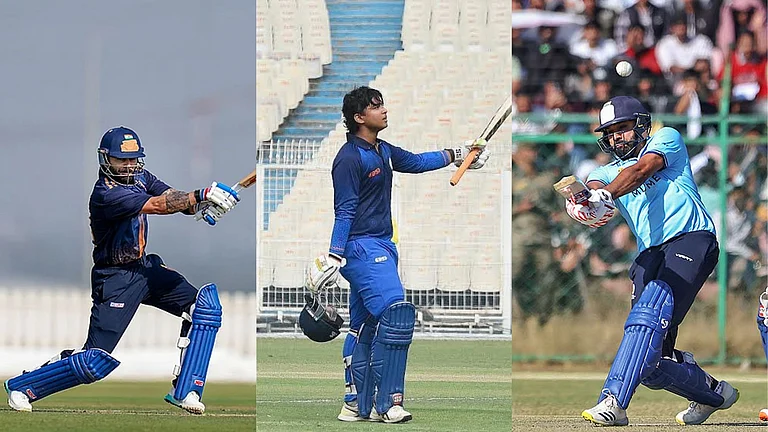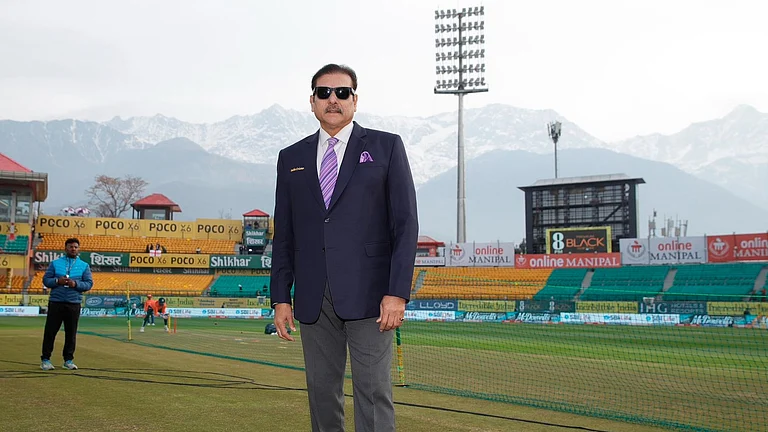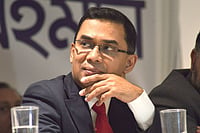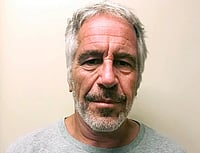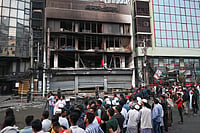THERE was a time in the not too distant past when active sports journalists coveringcricket for Indian newspapers and magazines would write books on various aspects of Indiancricket its history, tours, personalities and events. Thus came the works of BerrySerbadhikary, P. N . Sunderesan, Dicky Rut-nagar, Rajan Bala, Pratap Ramchand and others.In a country as mad about cricket as India, it has been a surprise that the last 15 yearshave seen few attempts by active cricket correspondents to write about their experiencesof covering Indian cricket. Pradeep Magazine, assistant editor (cricket) of The IndianExpress, with 20 years of sports reporting behind him has attempted to correct thisanomaly.
Not Quite Cricket is a simply written narrative of what the author believes iswrong with Indian cricket(a) the advent of big money and the bringing in of toutsand bookies resulting in "match fixing" and (b) the raw deal domestic cricket isgetting from the Board of Control for Cricket in India (BCCI). The author bases hisarguments on the opinions he has elicited by interviewing former Test and first classplayers like Kapil Dev, Madan Lal, Bishen Bedi, Sarkar Talwar and Ajay Sharma amongstothers. While his observations and inferences prove the point, there are a number ofquestions that remain unanswered for the simple reason that the author didnt thinkof asking them. No one can doubt that domestic cricket today is receiving stepmotherlytreatment and this can have a long term, debilitating effect on Indian cricket but whatevery serious cricket lover would have liked to know is why is it then that Pakistan whichhas a far poorer domestic cricket set-up, continues to do well? Why is it that countrieslike Sri Lanka and Zimbabwe do well with virtually no domestic 3-4 day cricket whilstEngland with the oldest established domestic cricket set-up flounders into mediocrity?Clearly there are virtues such as talent, technique and temperament which in turndetermine the success or failure of a system and of an individual when it comes to toplevel, competitive sport. While condemnation of the BCCI is justified in terms of what ithas failed to do for domestic cricket, it cant be denied that there are quite a fewthings the BCCI has done right too. Cricket, in comparison to most other games in India,is better administered and better run. The plethora of age-level tournaments run by theBCCI and various domestic tournaments do ensure an exposure to the talented at one or morelevels. All Indian international players are a product of the system which isnt trueof most other sports in India. The author, in his zeal, idealism and perhaps anger,forgets to lend a balance and objectivity that was expected from his seniority in hisprofession. The old saying" There are two sides to a picture"actually needs to be modified. Really there are three sides to a pictureyour side,my side and the right side. This is because there is an element of bias in each of oursides. It would have done no harm to the value of the book if the author had tried to getthe opinion of some senior officials from the BCCI too thats only fair injournalism.
The first half of the book deals primarily with the issues of bookies and match-fixingbased essentially on the authors meeting with a businessman bookie who recruited theauthor and wanted to pay him Rs 40 lakh just for arranging a meeting with Tendulkar andAzhar. After reading the account, one clearly gets the impression that Anil, thebookie/tout/agent, was a very raw and naive businessman who must be out of a job now. Theauthor, though, skill-fully sketches the way these businessmen work as he traces the"match fixing" allegations in India, Pakistan and Australia. The ManojPrabhakar-Outlook story, the Rashid Latif episode are well covered as also the" farce" of the Chandrachud probe. Whilst Pakistan is currently still carryingon with its probe, Australias probe has ended with fines imposed on Shane Warne andMark Waugh for their involvement with an Indian bookie. The author tries to bring out thatthere is no doubt that Indian players have taken money to fix matches or bet on the game.Even Kapil agrees . The author quotes him " . . . where there is so much smoke therehas to be some fire. I do believe strongly that a proper probe has to be conducted to getto the bottom of the whole affair. Why not hand over the entire probe to the C B I? ". All in all, an interesting book but one which leaves one with a lot of questions and fewanswers. An easy read, the authors language and expression are simple andstraightforward. It would have greatly helped if the author had allowed for an intelligentand knowledgeable cricket fan to decide for him/herself rather than impose his opinionthat the BCCI is the guilty party the villain in Indian cricket of as great adimension as the unnamed player/players who "fix" matches and the bookies whopay them to do it. He, however, deserves to be complimented for coming out with a book ona subject which is topical and controversial.
Only the publishers though can answer why a slim paperback, on ordinary paper and withno photographs has been priced at a whopping Rs 200.







